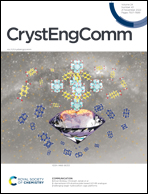Predicting pharmaceutical crystal morphology using artificial intelligence
Abstract
The crystal morphology of active pharmaceutical ingredients is a key attribute for product design, manufacturing and pharmacological performance. Currently, the morphology of pharmaceutical crystals is designed and controlled through resource intensive screening methods, which rely on trial-and-error approaches and experience. The demand for a more efficient and sustainable approach has driven research into the development of 21st century predictive methods. In this work, we demonstrate how artificial intelligence offers extraordinary potential for developing predictive, data-driven morphology models. Here, machine learning algorithms were implemented to predict the morphology of crystalline products. Using publicly available data, key limitations were identified, highlighting the lack of systematic experimental detail. These issues were addressed through an in-house experimental screening campaign, which leveraged robotics to increase throughput and overcome the challenges associated with the inherently subjective morphology labelling. As a result, we show that data-driven models can predict crystal morphology with an accuracy of up to 87.9%. These results are proof of the predictive power of artificial intelligence for morphology prediction and pharmaceutical product design.

- This article is part of the themed collections: Machine Learning and Artificial Intelligence: A cross-journal collection, Data Driven Crystal Engineering and CrystEngComm up-and-coming articles


 Please wait while we load your content...
Please wait while we load your content...